Ocean Shipping Container Sizes and Types: A Guide for Shippers
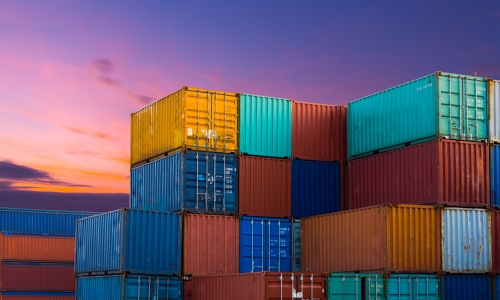
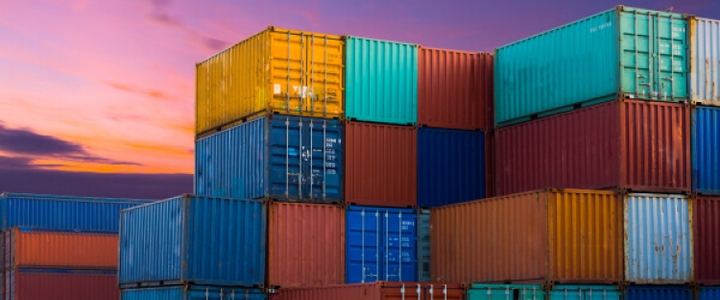
In this article, you will find the details you need to identify the right shipping container size and type to meet your international freight requirements. After reading through the article, you will know...
- What types of containers are available
- The standard sizes of shipping containers of each type
- The capacity of each type of shipping container
- What size shipping containers to request for your freight
- The best container to choose for your type of shipment
- The standard shipping container dimensions (length, width, and height)
Main Types of Freight Container for International Shipping

For the majority of commodities, there is nothing better than a standard dry shipping container. This type of shipping container has doors at one end only. It is suitable for goods loaded loose or on pallets or skids. For many businesses shipping internationally , this is the only container-type they ever need, but depending on the nature of your cargo, you may want to consider the following types of freight container:
Flat Rack Freight Container
A flat rack freight container is a large, horizontal metal frame secured to the deck of a ship by removable steel locks. They're used for transporting oversized and over-mass cargo.
A typical height would be around ten feet, and they can stretch as long as 60 feet or more. Some offer modular panels along one side so you can secure your cargo with chains and ratchet straps, while others also have doors at both ends which can be locked into place. They're made out of heavy-duty aluminum alloy, and weigh around 18 tons when empty, depending on their size. They usually come in three sizes: 20ft (6m), 40ft (12m), and 53ft (16m). The base width is 8 ft (2.4m), and the depth can range from 5 ft (1.5m) to 7 ft (2.1m).
Flat Rack Freight Containers are used for transporting heavy or oversized cargo that cannot fit into a standard shipping container, such as engines, heavy construction equipment, wind turbines, tanks, etc. They are also very useful when there is no appropriate method of transporting crates over an uneven surface, like switchbacks on a mountain road or dockside jetties which go up and down with the tide.
They come in three varieties: stake body, low profile height steel body, and composite top rail. Stake bodies have stakes attached to their sides for carrying general bulk cargo while low-profile height steel bodies are adapted to carry cargoes with greater height restrictions. Composite top rail flat rack freight containers are used for carrying cargo over the deck of a ship, allowing regular containers to be loaded under them.
Flat Rack Freight Containers can be carried in special trailers or in open trucks that have been modified with an aluminum deck and rail system. They tend to cost around $30,000 each when new.
A common misconception is that these are called "container ships," but true container ships have standardized metal shipping blocks instead of large, individual frames like these. In real terms, flat racks are not exactly containers, because they have no roof and typically no sides either. They may have upright ends, but not in every case— some flat racks are nothing more than a simple platform. Others have collapsible ends to increase their adaptability for different cargo types.
High Cube Container
Almost identical to a standard dry container, a high cube is around a foot taller, and hence has more storage capacity. A full container load in a high cube can be as much as 76 cubic meters of freight, compared with 67 cubic meters in a standard container.
A high cube container has the following dimensions:
- Outside length - either 20'6" (6.25m) or 21'4" (6.50m)
- Outside width - either 8'0" (2.44m) or 8'6" (2.59m)
- Inside height - either 9'-3"(2.82m), 10'-0"(3.05m), or 11'-5"(3.48m).
The outside dimensions would be the same as any other container, but all high cubes are 6inches taller than standard ISO shipping containers to allow for more volume inside, so if you get an extra 6inches of height, you get 19% more cubic space inside.
The 6inch (15cm) difference in height can be relevant when choosing between a 20ft or 40ft high cube container. When shipping goods that are very tall, one may need to use either twice as many containers in order to fit all the goods inside; or choose the higher volume you get in a taller container. So if you had two 20ft high cubes, and one 40ft high cube, you would have one-third of the volume in each of the smaller containers compared to one container in the larger container.
Open Top Freight Container
For situations where you have a shipment that's too high for a standard dry container, but not large enough to justify a high cube unit, you might get away with using an open top shipping container. Of course, the top of this container type is not open in the literal sense, but is covered with a tarpaulin to keep out the elements. It can also be loaded and unloaded from above using a crane.
Open top freight containers are a great alternative to bulk containers. While bulk containers or 'lift vans' as they are sometimes known have a number of benefits over open-top freight containers, many clients require additional features which means that bulk is not always the best option.
Tunnel Container
A tunnel container is a dry freight container, used for FCL and LCL shipping with a set of doors at each end, making the container much easier to stuff and destuff than a standard single-door unit. Tunnel containers are the perfect solution when you need your goods to be loaded and unloaded swiftly.
A tunnel container is a standard ISO shipping container that has been outfitted with an extra layer of metal and specialized locks. This specialized cargo delivery method was designed for high-risk shipments of cash, documents, precious metals, and gems.
The Tunnel Container System (TTC) is a physical security system used to protect valuable or vulnerable cargoes from the threats presented through their normal mode of transport, by moving them underground through specially-designed routes.
Side Open (or Open Side) Shipping Container
Like tunnel containers, the design of open side units facilitates loading and unloading. Instead of having doors at the ends, one entire side of the container is hinged in four places, providing access along the entire length of the unit. This configuration is perfect for when forklifts will load or unload goods packed on pallets.
Tank Containers
Tank containers are for shipping hazardous or non-hazardous liquids and gases. They comprise a cylindrical tank constructed of steel or similar corrosion-resistant material, housed in a steel frame. The frame is of the same dimensions as standard containers, so that the tank container can be stacked with any other container types on the deck of a cargo vessel or in a container terminal.
Since their introduction in 1956, one out of every six tons of ocean container traffic is now handled by Oceanus' fleet of patented clamshell tank containers. A 40-ft (12 m) ISO (International Organization for Standardization) specification Oceanus tank container has 44 stanchion locations on three curved corrugated corner posts; each with stake pockets.
The 11 center stanchions on each top rail carry the load of the roof which is a sheet of corrugated steel supported by a light angle iron frame at the center and from above by corrugated corner posts. The shell's bottom flange is stiffened with an I-beam that also acts as a frame for lifting lugs. There are three straight longitudinal beams under this first floor for reinforcement, which allows the tank container to carry more than twice its weight in cargo.
Tank containers can be used to transport liquids or gases. They usually have two or three separate tanks inside them divided by partitions which make up two floors accessed via trapdoors in the roof — one main tank floor and another smaller 'tween deck' which often houses electrical components. In the case of liquids, they are usually not electrically powered and only need to be checked every couple of years. Gases on the other hand typically use electrical components and need to be certified by a third party company on a yearly basis.
Refrigerated Containers (or Reefers)
These are identical to standard dry shipping containers, but are fitted with insulation and refrigerator units to keep contents within a certain temperature range during shipment and storage.
Refrigerated containers or reefers are used worldwide to keep perishable goods cool for storage and shipping. As railroads improved access to intermodal transport systems became possible, meaning you can now find food across continents without losing nutritional value. Technology also improved the designs of these containers, making them more efficient and safer than ever before.
Refrigerated containers are able to keep food fresh for long periods of time because they operate at lower temperatures than regular shipping containers. They work by maintaining a set temperature (most often around -10 degrees Celsius) with cold-generated systems or cryogenic systems. These containers usually have large sliding doors on one end to allow easy loading and unloading.
Shipping Container Dimensions and Capacities
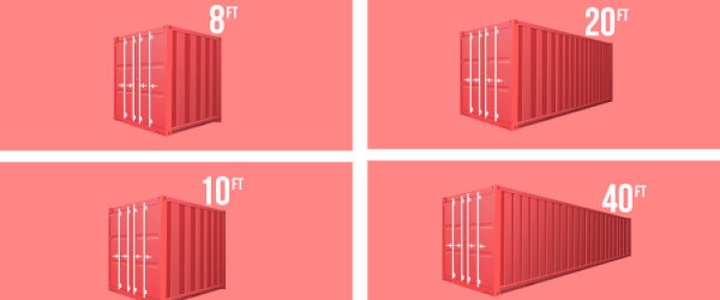
The following tables detail the dimensions and capacities of the most common container types. It is worth noting that in general, shipping containers are available in lengths of 40 feet and 20 feet.
Please also note that in the tables, the length, width, and height of each container type is the internal, rather than external measurement (except for tank containers), which is why you will see variations in the dimensions. Externally, all 40-foot, 20-foot, and 10-foot containers are identical in length and width.
20 foot Shipping Container Dimensions and Capacity
| Container Type | Container Length (Feet and Inches) | Container Width (Feet and Inches) | Container Height (Feet and Inches) | Load Capacity (Cubic Meters) |
|---|---|---|---|---|
| Dry Container | 19' 4¼'' | 7' 8⅝'' | 7' 6¼'' | 33.2 |
| Flat Rack Container | 19' 9¾'' | 8' | 7' 3⅞'' | 33.2 |
| Open Top Container | 19' 4¼'' | 7' 8⅝'' | 7' 10¼'' | 33.2 |
| Reefer Container | 17' 11⅝'' | 7'6'' | 7' 4⅞'' | |
| Tank Container | 20' (external) | 8' | 8' 6'' | 20,001 Liters |
40 foot Shipping Container Dimensions and Capacity
| Container Type | Container Length (Feet and Inches) | Container Width (Feet and Inches) | Container Height (Feet and Inches) | Load Capacity (Cubic Meters) |
|---|---|---|---|---|
| Dry Container | 37' 11¼'' | 7' 8⅝'' | 7' 10¼'' | 67.67 |
| Flat Rack Container | 39' 3⅞'' | 7' 4'' | 7' 5⅓'' | 52.7 |
| Open Top Container | 39' 5'' | 7' 8⅛'' | 7' 6¼'' | 66.67 |
| Reefer Container | 37' 9'' | 7' 5⅜'' | 6' 11⅞'' | 57.76 |
| High Cube Container | 39' 5'' | 7' 8⅛ | 8' 6¼''' | 76.3 |
A Few More Types of Containers
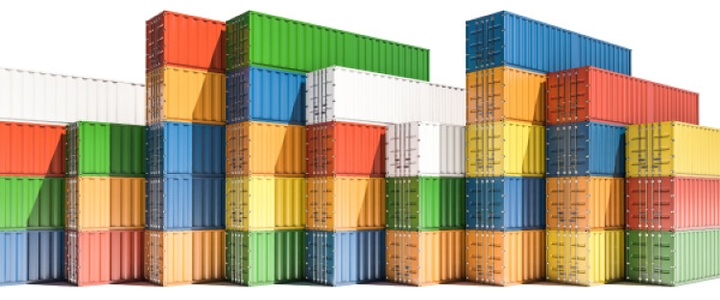
In addition to the main shipping container types documented in this article, there are a few other variations in use today, including:
- 45-foot High Cube: The same as other high cube containers, but with a length of 45 feet
- **10-foot Containers:**The same as all other containers, but just 10 feet in length
- Ventilated Containers: For goods requiring plenty of air circulation
- Insulated Containers: For products sensitive to very high temperatures
- Half Height Containers: For small quantities of bulk freight such as stones or coal
- Car Carriers: Specialized containers for transporting cars
How’s Your Container Savvy Now?
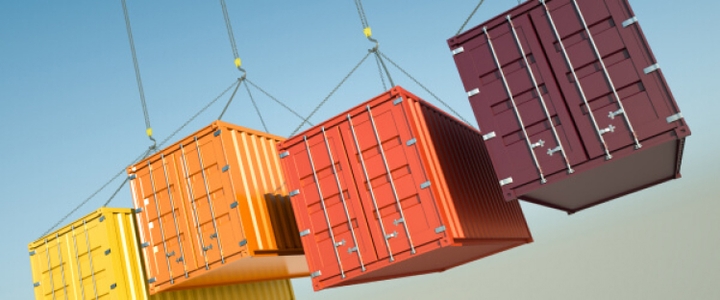
If you’re feeling a little overwhelmed at the many types and sizes of shipping containers to choose from, take a deep breath, and relax. In most cases, you will not need to worry about selecting containers for your shipments.
As long as your freight forwarder or international shipping company knows what type of goods you wish to ship, the weight, dimensions, and volumes of those goods, and any special requirements such as temperature control, insulation, or ventilation, you can leave it to them to find an optimal solution.
At Shipa Freight, for example, we will calculate and procure the right types, sizes, and number of containers to ship your cargo safely and securely, and to keep it in tip-top condition from origin to destination.
Are you ready to get shipping? If so, head over to our homepage and get an online FCL quote today.


